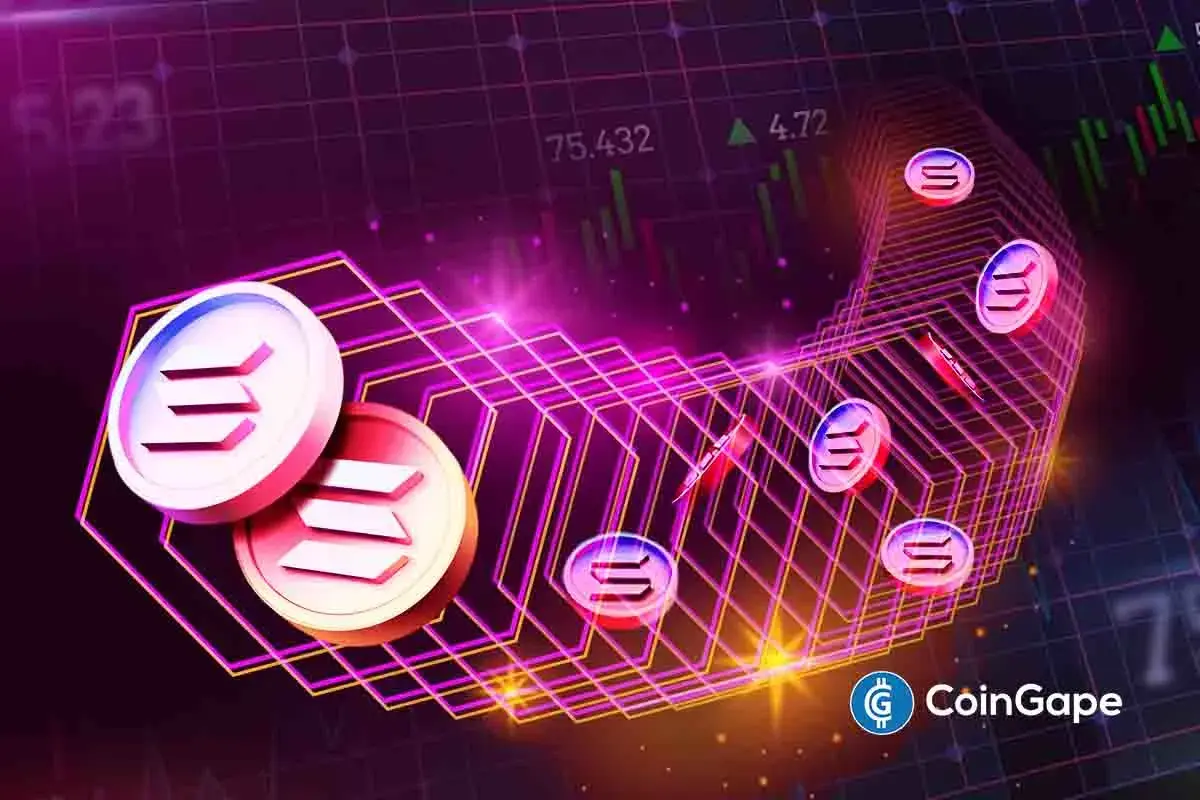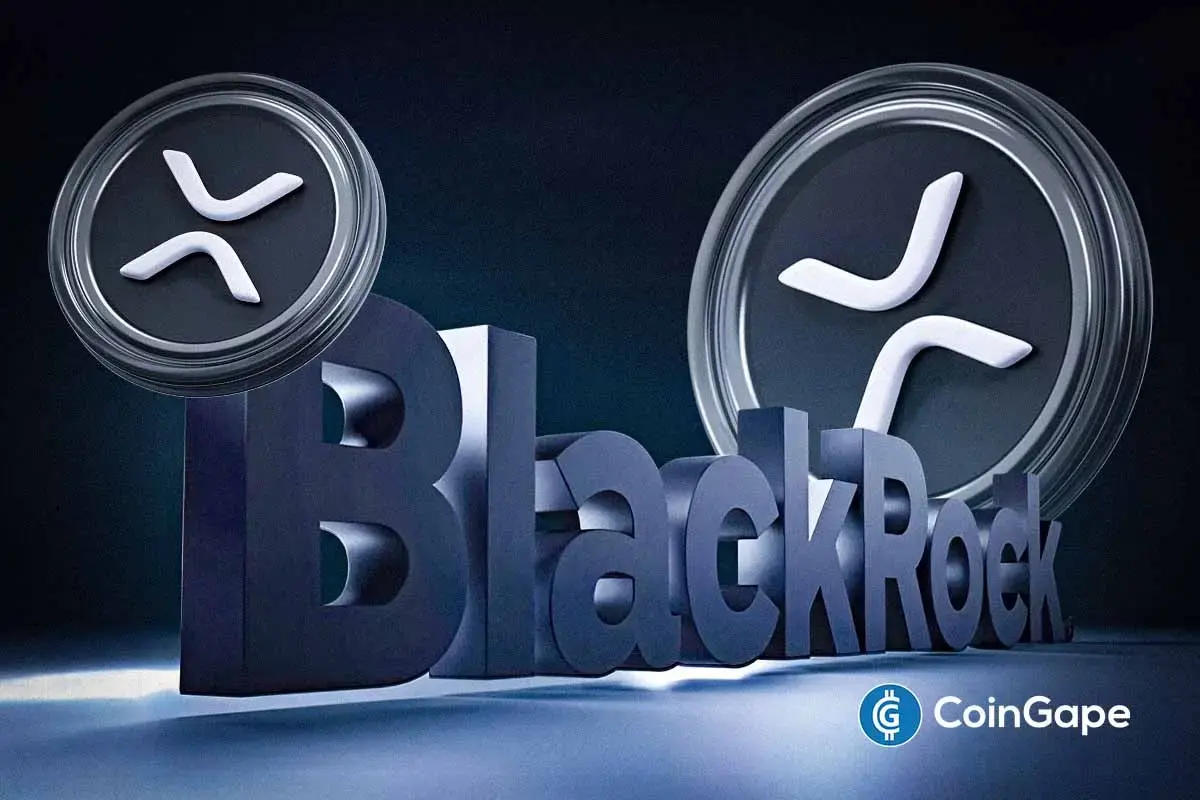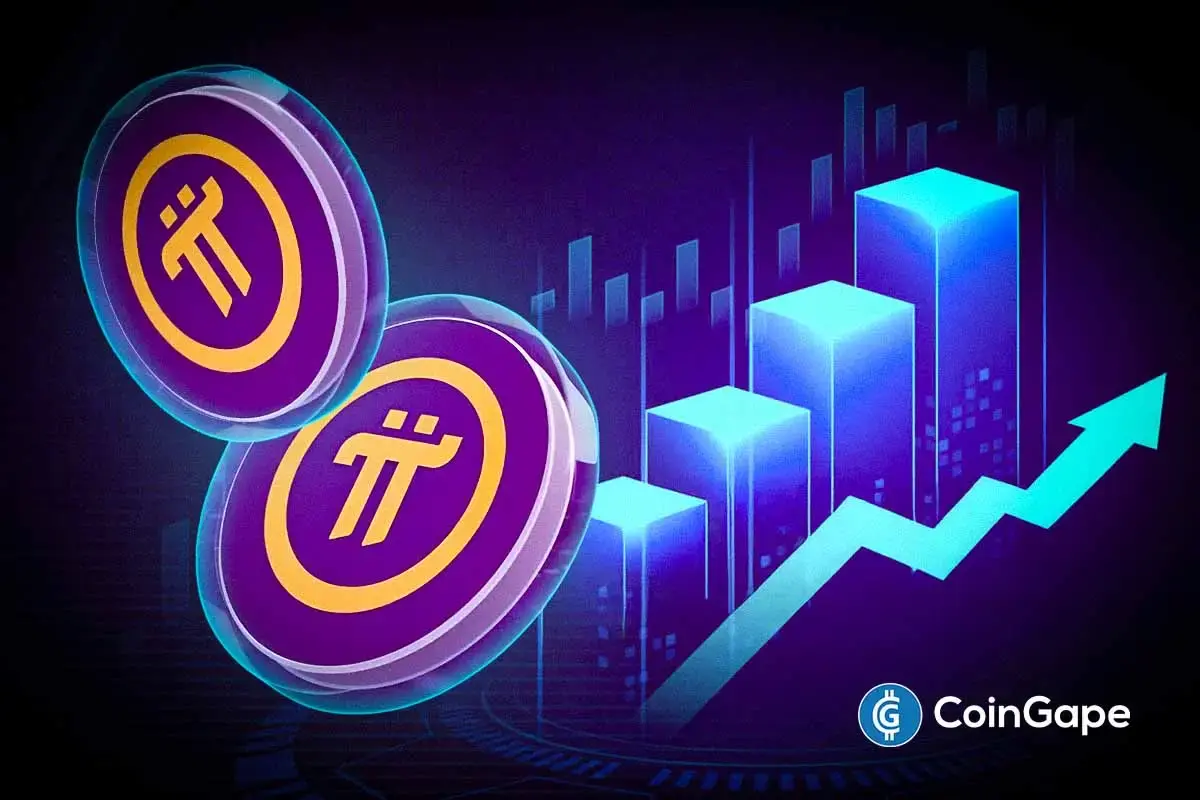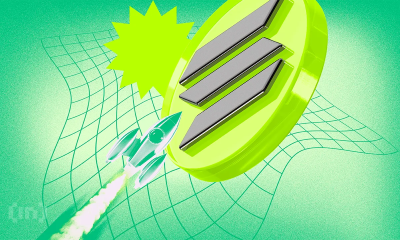Altcoin
BlackRock Confronts Crypto Scams After Ethereum ETF Launch

In the aftermath of BlackRock’s recent Spot Ethereum ETF launch on July 23, the world’s largest asset manager has issued a stern warning about a rise in crypto investment-related scams. The company, which manages $10.6 trillion in assets, is urging caution as fraudsters increasingly use its name to deceive potential investors. Moreover, since Ethereum ETFs have led to a heightened interest in crypto investments, more people are prone to such scams.
BlackRock Issues Stark Warning Against Crypto Scams
In a post on X, BlackRock stated, “There has been a spike in investment-related scams, including directing users toward crypto investment-related websites and/or social media platforms such as WhatsApp or Telegram.” Moreover, the company emphasized that neither BlackRock nor its executives ever solicit investments or payments via social media.
The organization advised, “Please remain vigilant and if you suspect fraudulent activity, do not proceed.” Further details on the asset manager’s website outline the sophisticated methods used by scammers. They also noted that these fraudsters invest time in researching their targets to build a rapport and gain trust.
In addition, they may present themselves as charming and knowledgeable, using legitimate-sounding names and information to appear credible. One common tactic involves creating phishing websites and fake platforms designed to capture personal information. Once obtained, this data is used to offer seemingly attractive investment opportunities.
Also Read: WazirX Poll Explained: Impact On Users, Tax Implications, Withdrawal Limits
Impersonation Of Executives
Impersonation is another prevalent strategy, with scammers using the names of actual BlackRock employees or executives to appear legitimate. However, the firm affirmed that their executives never reach out to potential investors via social media. In addition, fraudsters behind crypto scams use platforms like WhatsApp and Telegram to offer fake training sessions promising high returns.
These group chats create a sense of urgency and fear of missing out, pressuring individuals to invest quickly. Moreover, the asset manager also warns about the use of fake email addresses and documentation. These include investment prospectuses and application forms that appear authentic. Also, scammers may create domains and email addresses that closely resemble those of genuine companies to trick unsuspecting victims.
Time pressure is another strategy, where scammers create a sense of urgency by offering time-limited investments. This strategy plays on the fear of missing out (FOMO). Hence, it pushes individuals to make quick decisions without thorough verification. This tactic especially works for those interested in crypto investments as the market is volatile and demands immediate action.
Additionally, social engineering techniques are employed to manipulate individuals into divulging confidential information. Spoofing, where messages, emails, or phone calls are made to appear as if they come from legitimate companies, is another method used to deceive potential victims.
The warning from BlackRock comes at a crucial time as the interest in their new Ethereum ETF, alongside their Spot Bitcoin ETF, has surged. This heightened attention has made the ETF issuer a prime target for scammers aiming to exploit the growing enthusiasm for crypto investments.
Also Read: US Fed Rate Cut on Radar, Will Bitcoin (BTC) Breakout In August?
The presented content may include the personal opinion of the author and is subject to market condition. Do your market research before investing in cryptocurrencies. The author or the publication does not hold any responsibility for your personal financial loss.
Altcoin
Top Solana Price Levels to Watch in the Short Term

As the crypto market is experiencing a bullish reversal with its total market cap surging by 3.17% to $2.74 trillion, the Solana price is gearing up for a potential rebound. As traders and investors are looking to capitalize on the token’s volatility, analysts unveil key price levels to watch in short term.
Notably, analysts like Ted predict SOL’s potential uptick to $180 amidst increasing whale activity. In this article, we’ll explore the top Solana price levels to watch in the short term which will help you to stay ahead of the curve and capitalize on market opportunities.
Solana Price To Rebound: Key Price Levels Revealed
As the Solana price hovers below $140, analysts and traders are closely watching market movements. While bears fear of a possible crash to $120, analysts like Ted offers a bullish outlook, predicting SOL’s potential surge to $180 by May 2025.
Presenting historical trends, Ted asserts that the Solana price is poised to reach $160-$180. He notes that Solana’s current patterns mirror those seen in 2022 Q4, suggesting potential similarities in future price movements. In addition, the analyst maintains a bullish outlook for the token, predicting a new all-time high for SOL during the third quarter of this year.
Key Price Levels To Watch
While Solana is poised for a potential rebound, traders are recommended to watch key price levels. Analyst Degen Hardy presents a detailed analysis of SOL’s current market conditions where he is trying to identify a long entry opportunity. As per his conclusions, the ideal scenario will be the Solana price to pull back, which, in turn, will form an inverse head and shoulders pattern.
Significantly, the chart presented by the trader represents key levels to watch. As SOL has surged past the significant support level of $125 and the resistance level of $135, the next target is $178.


As of now, SOL is trading at $139.23, up 2.15%.Over the past week and month, Solana has experienced a surge of 3.25% and 6.6%, respectively. Historical data suggests that Solana price could ultimately reach $256 if it surges past $178. The key levels in between $178 and $256 include $199, $216, and $238.
Moreover, increased whale activity also projects a potential rebound in Solana’s price. Whale Alert revealed that a Binance address moved 374,161 SOL ($52,768,341) to an unknown wallet.
SOL Clears Key Resistance: What’s Next
In his recent X post, TraderAG projected Solana price’s potential target of $170 as it has broken past its key resistance level at $135-$137. Though the analyst expected a retest to the $125 level, SOL broke past the resistance zone, sparking speculations of an uptrend.
According to TraderAG, SOL is capable of reaching $170 and beyond in the near term. CoinGape’s Solana price prediction reveals that SOL is expected to reach a maximum level of $173.44 and a minimum of $140.04 in 2025.
Disclaimer: The presented content may include the personal opinion of the author and is subject to market condition. Do your market research before investing in cryptocurrencies. The author or the publication does not hold any responsibility for your personal financial loss.
Altcoin
Will Cardano Price Break Out Soon? Triangle Pattern Hints at 27% ADA Surge

Cardano price appears to be inching towards a key breakpoint as it continues to consolidate within a symmetrical triangle pattern visible on its price chart. According to cryptocurrency analyst Ali, this formation could help ADA in a major price movement.
Cardano price predicted to surge 27%
In a recent tweet, Ali suggested that Cardano might be in the early stages of breaking out from this consolidation pattern. The symmetrical triangle visible on the price chart shows converging trendlines that have contained ADA’s price movement since early April 2025.
The symmetrical triangle pattern forming on Cardano’s chart is a period of consolidation where buyers and sellers reach a temporary equilibrium. According to technical analysis principles, symmetrical triangles often serve as continuation patterns, with the breakout direction typically following the prior trend.
#Cardano $ADA is still consolidating within a triangle pattern, setting the stage for a potential 27% price move. pic.twitter.com/AWH84U1FnJ
— Ali (@ali_charts) April 21, 2025
In Cardano’s case, the breakout yields the potential 27% price movement mentioned by Ali. The analyst has pointed out that Cardano might be in the early stages of breaking out from this pattern. The analysis by Ali comes as Cardano bulls secure the most important signal to drive a price rally.
Cardano is currently trading at $0.6424 with a 4.3% increase over the past 24 hours. Despite this short-term gain, ADA remains down nearly 10% over the past 30 days.
ADA sentiment remains neutral
Current market sentiment surrounding Cardano is mixed despite the potentially bullish technical setup. According to data from CoinCodex, the overall sentiment toward ADA is currently classified as “Neutral.” However, the Fear & Greed Index shows a reading of 39 and places it in the “Fear” category.
Looking ahead, CoinCodex projects that Cardano’s price could rise by 18.55% to reach $0.765833 by May 21, 2025. While this forecast falls short of the full 27% move suggested by the triangle pattern analysis, it aligns with the general direction and timeframe for a potential upside breakout.
The platform’s analysis of Cardano’s recent performance shows that ADA recorded 14 green days out of the last 30, which is a 47% positive day ratio. Price volatility over this period also stood 7.31%.
Despite the current “Fear” reading and mixed sentiment indicators, CoinCodex concludes that it’s now a good time to buy Cardano based on their technical indicators. However, the next move by ADA could very well be based on the overall market conditions too.
Disclaimer: The presented content may include the personal opinion of the author and is subject to market condition. Do your market research before investing in cryptocurrencies. The author or the publication does not hold any responsibility for your personal financial loss.
Altcoin
Expert Reveals Why BlackRock Hasn’t Pushed for an XRP ETF

With Ripple’s XRP lawsuit settlement finally in place, the crypto community is abuzz with anticipation over a possible XRP ETF launch. Despite the growing frenzy over XRP exchange-traded funds, the world’s largest asset management company, BlackRock, remains silent, sparking significant attention.
Detailing BlackRock’s vision and possible reasons behind its silence, expert All Things XRP shared a series of X posts. Let’s explore the expert’s threads, reading through the key points that shed light on BlackRock’s strategic approach to crypto investments.
Why Is BlackRock Silent on XRP ETF?
In a series of X posts, expert All Things XRP shed light on BlackRock’s strategic moves that steer them away from an XRP ETF. According to the expert, BlackRock’s hesitation to launch an XRP exchange-traded fund is driven by many factors regulatory concerns, market dynamics, and strategic considerations.
BlackRock Focuses on Bitcoin and Ethereum
Notably, the asset manager’s focus on Bitcoin and Ethereum ETFs is one of the main reasons to shy away from XRP. BlackRock is currently riding the wave of success with Bitcoin and Ethereum.
Reportedly, iShares Bitcoin Trust boasts over $30 billion in Assets Under Management (AUM). In addition, BlackRock’s ETH ETF has reached $1 billion in AUM in just two months. In light of this success, the platform is cautious about exploring other altcoins to mitigate potential risks.
Moreover, XRP may not meet BlackRock’s internal thresholds for demand, liquidity, and legal clarity. According to the company’s ETF executives, only Bitcoin and Ethereum currently meet these requirements.
Regulatory Concerns
As noted by the expert, regulatory concerns play a major role in BlackRock’s hesitation to back Ripple. Although both Ripple and the SEC dropped their appeals in the XRP lawsuit, the case is not officially over, with the label of “security” still lingering around. This uncertainty may deter the investment giant from applying for an XRP ETF.
Recently, All Things XRP shared insights on CEO Brad Garlinghouse’s crucial role in Ripple’s growth.
BlackRock’s Strategic Wait-and-See Approach
Interestingly, BlackRock is adopting a cautious approach, waiting for competitors like Grayscale and Franklin Templeton to launch their XRP ETFs. While these platforms will face the possible regulatory hurdles first, it will pave the way for BlackRock’s easy entry into the ETF space. This approach will also allow BlackRock to gauge institutional appetite for XRP products and assess the risk landscape.
Whoever takes the lead, an XRP ETF launch is poised for a significant price surge in the Ripple coin.
In addition, the asset manager’s fake XRP ETF filing in 2023 has further strengthened their cautious stance. Previously, the filing went viral and sparked ambiguity within the crypto market. The investment firm had to publicly deny involvement, potentially damaging their reputation. This incident might have made them cautious about pursuing an XRP ETF, at least for now, as they may want to avoid similar PR issues.
Will BlackRock Launch an XRP ETF?
Additional factors like lack of demand and XRP’s relatively small market share have also contributed to the asset manager’s decision. However, BlackRock is expected to push for an XRP ETF in the future after tackling all the possible hurdles.
BlackRock is known for launching products at the right moment, when the odds are in their favor. The strategic move is expected when XRP meets complete regulatory clarity and market stability. As per All Things XRP, BlackRock is envisioning dominating the market. The expert cited, “But if and when they do, it’ll be to dominate the space — not just participate.”
Disclaimer: The presented content may include the personal opinion of the author and is subject to market condition. Do your market research before investing in cryptocurrencies. The author or the publication does not hold any responsibility for your personal financial loss.
-

 Market23 hours ago
Market23 hours agoDogecoin Defies Bullish Bets During Dogeday Celebration
-

 Altcoin23 hours ago
Altcoin23 hours agoExpert Predicts Pi Network To Reach $5 As Whales Move 41M Pi Coins Off Exchanges
-

 Market21 hours ago
Market21 hours agoWill XRP Break Support and Drop Below $2?
-

 Bitcoin11 hours ago
Bitcoin11 hours agoUS Economic Indicators to Watch & Potential Impact on Bitcoin
-

 Bitcoin20 hours ago
Bitcoin20 hours agoBitcoin LTH Selling Pressure Hits Yearly Low — Bull Market Ready For Take Off?
-

 Bitcoin17 hours ago
Bitcoin17 hours agoHere Are The Bitcoin Levels To Watch For The Short Term
-

 Market14 hours ago
Market14 hours agoBitcoin Price Breakout In Progress—Momentum Builds Above Resistance
-

 Altcoin14 hours ago
Altcoin14 hours agoExpert Says Solana Price To $2,000 Is Within Reach, Here’s How





















✓ Share: